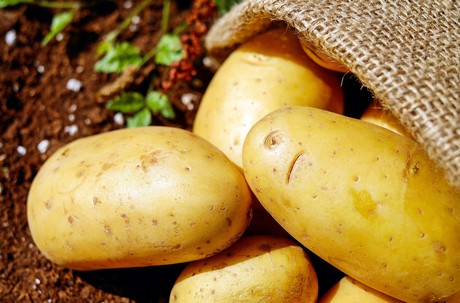 While Idaho may lead the nation in potato production, Colorado growers are satisfied that their quality continues to drive consumer demand for their own varieties. Potato growers in the San Luis Valley in Colorado are experiencing significant growth in demand for yellow varieties, as well as seeing a healthy market in other types.
While Idaho may lead the nation in potato production, Colorado growers are satisfied that their quality continues to drive consumer demand for their own varieties. Potato growers in the San Luis Valley in Colorado are experiencing significant growth in demand for yellow varieties, as well as seeing a healthy market in other types.
“In Colorado, we grow most varieties of potato, the primary one being russets,” says Jed Ellithorpe of Aspen Produce. “Under russet, there is the Norkotah and the Canela. The Canela is our later-term variety, meaning it stores well for up to 10 months. In that sense, it’s great for shipping as it stays fresh for a long time and it’s also among the last to be shipped before the season starts again in April. We also grow red varieties as well as yellow ones. There are a large array of yellow varieties, including Satina, Alegria and the well-known Yukon Gold. Some growers are now producing the Rooster, which is an emerging red-skinned, yellow-flesh proprietary potato from Albert Bartlett. It has a phenomenal, nutty taste and is being well-received for its look and flavor.”
While Russet is the most widely produced type of potato grown in the United States, Ellithorpe says it’’s the yellow varieties that are experiencing the most growth.
“The growth of yellow potatoes in the market is outpacing that of any other type,” he says. “This has been driven by a couple of factors. The first is health-conscious buyers who like to cook potato at home but are using less butter and margarine. The yellow flesh gives that perception of a creamy and buttery flavor with less of those additions.
“Another reason is that the yellow potatoes have a fluffier and creamier texture,” Ellithorpe continues. “They do have a premium taste, and people are beginning to realize that and are turning to them more and more. They also have a favorable appearance, which is pleasing to restaurants and other value-added producers.”
While Colorado produces fewer potatoes per year than Idaho, a higher proportion of potatoes grown there are making their way to the fresh market. Ellithorpe attributes this to the microclimate of the San Luis Valley, as well as the lower production volumes that growers there deal with.
“The San Luis Valley sits at around 7,600 feet,” Ellithorpe says. “Our nights are cool, and therefore the plants grow slower. When the plants grow in this manner, they are less stressed and less subject to diseases. The scale of production here is such that growers take care of their crop more closely, ensuring that quality. As a result, 80 percent of Colorado potatoes make it to the fresh market due to their favorable appearance and high quality. As a contrast, in Idaho, less than 35 percent end up in the fresh market, while the remainder usually go for further processing into chips and other finished products.”
Source: Fresh Plaza